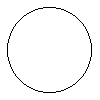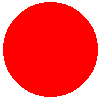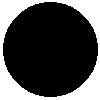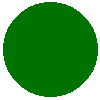Roundel
WARNING: Do not cite this page as a reference. This page is on this wikispace only to make the content "searchable" and easier to find. If you find the information you seek here, go to the original sources to verify the information and use them for your documentation. Revised {$revisiondate}.
Glossary of Terms:[edit | edit source]
Torteau is the singular, torteaux is the plural, for a roundel or roundels gules. http://heraldry.sca.org/coagloss.html
Illustrations:[edit | edit source]
Period images:[edit | edit source]
| Wappenbuch | File:BSB278 f94r scallopedroundel.jpg | Insignia |
| Wappenbuch der Arlberg-Brudershaft, 1548, f849, a roundel wavy? | Insignia Lucensium..., BSB 278, f94r, gyronny scalloped (?) roundel (cockaded ribbon?) | Insignia pontificum Romanorum et cardinalium II, 1550-55, BSB 267, f239r, cornucopias in saltire and multi-tinctured roundels |
| Siebmacher, |
| Siebmacher, 1605, plate 200, orb |
Pictorial Dictionary of SCA Heraldry (3rd edition):[edit | edit source]
Illustration/s from Brickbat's Armorial Stash -[edit | edit source]
[[1]]:
Pennsic Traceable Art Project:[edit | edit source]
Period Sources:[edit | edit source]
Button with holes:[edit | edit source]
"Le Costume Medieval de 1320 a 1480" by Florent Veniel. Published by Heimdal 2008. ISBN 978-2-8404-8254-3. Page 37, image 13 shows "Boutons de cuivre XVe - XVIe siecle". These are the classic modern 4 hole type. Image 14 shows a more decorative piercing of 5 petal-shaped holes around a central round hole.
Special tincture names for roundels:[edit | edit source]
From the old Heraldic Primer (Now defunct at http://heraldry.sca.org/primer/roundels.html and only to be seen in an early form here: http://home.comcast.net/cwest222/heraldicprimer/index.html):
| * A plate. (A roundel argent.) |  |
* A hurt. (A roundel azure.) | 
| |
| * A torteau. (A roundel gules.) |  |
* A bezant. (A roundel Or.) | 
| |
| * A golpe. (A roundel purpure.) |  |
* A pellet. (A roundel sable.) Also called a gunstone or ogress. |

| |
| * A pomme. (A roundel vert.) |  |
At least one other roundel has a special name: A fountain. |
(A roundel barry-wavy azure and argent.) |
Precedents[edit | edit source]
Precedents of the SCA College of Arms - [[2]]
Morsulus Heralds Website - [[3]] (to search the LoARs and Precedents)
Restatement Wiki - [[4]] (restatements of Precedents)
Use the above links to be sure any precedents listed below haven't been superseded by newer precedents.
Definition:[edit | edit source]
===From the October 1988 LoAR: [Moon in its complement] On the letter of intent the moons were blazoned as "increscent moons in their complement": there is no such thing. It is a matter of artistic license how the "man in the moon" is depicted: here it is as an increscent face superimposed on the round form of the moon. (LoAR 30 Oct 88, p. 6 János Veres) [[5]]
Registerability:[edit | edit source]
(Restricted, Reserved, SFPP, OOP)
January 2014 Cover Letter:[edit | edit source]
From Wreath: Phases of the Moon - The "phases of the moon" motif of a roundel between an increscent and a decrescent has long been considered a step from period practice. As early as August 1989 it was declared "not really period style," but did not seem to be considered a step from period practice until September 1998. We know that the motif of an X between two Ys is a fairly common one in later period English armory. Non Scripta found evidence of a rose between two lions combattant and a mullet between two lions combattant, and Elmet added a fleur-de-lys between two rabbits passant respectant, all in English armory. Orle actually found a roundel between a decrescent and an increscent in Italian armory. We have never considered an X between two Ys respectant to be considered a step from period practice with any other combination of charges, only with a roundel and crescents, which is not consistent. Therefore, we are overturning past precedent. This motif is no longer considered a step from period practice. http://heraldry.sca.org/loar/2014/01/14-01cl.html
From the January 2013 LoAR:[edit | edit source]
Sens Rowan atte Grove. Device. Sable, a bat winged ferret statant erect argent maintaining a needle bendwise inverted and a button Or, charged on the shoulder with a mullet of four points gules. "The button depicted in this device appears to be a non-shank button, with two holes drilled for sewing it down. This may not be a period form of button; the only definite buttons with holes that commenters could find were shanked buttons where the shank had broken off, and holes were later drilled. It is unclear if the holes were drilled in period or post-period. We are willing to give the submitter the benefit of the doubt in this case, but non-shanked buttons may not be registerable in the future without sufficient evidence of their existence as a period artifact or charge."
@http://heraldry.sca.org/loar/2013/01/13-01lar.html
From the March 2012 LoAR Cover Letter[edit | edit source]
...due to the potential confusion with other charges, roundels with complex lines will not be registered after the September 2012 meeting without evidence of period practice. [[6]]
From the May 2010 LoAR:[edit | edit source]
#84Bruce Draconarius of Mistholme. Badge. (Fieldless) An orb argent. While an orb is registered in our Ordinary and Armorial in the arms of the Arch-Steward of the Holy Roman Empire, this is the first registration in the armory of a SCA member. The charge is found in the arms of Friellas in 1540 (Livro de Nobreza, fo.23v) and Fleckensteimer (Wappenbuch von 1605, Siebmacher, plate 200). As an artifact, an orb is a symbol of kingship, a sphere topped with a cross, symbolizing Christ's dominion over the world. There is no evidence that orbs were only used by kings in armory, as shown by the submitted examples. so they are registerable. There is also no evidence that orbs and roundels were considered identical in period armory, so there is at least significant difference between a roundel and an orb. http://heraldry.sca.org/loar/2010/05/10-05lar.html
Conflict:[edit | edit source]
From the January 1987 LoAR:[edit | edit source]
For purposes of difference a moon in her complement and a plate are functionally identical. (LoAR 25 Jan 87, p. 17 Brenna the Disinherited) [[7]]
Identifiability:[edit | edit source]
Collected Precedents:[edit | edit source]
Tenure of Elisabeth de Rossignol (May 2005 - July 2008) - [[8]]
The 2nd Tenure of François la Flamme (October 2004 - May 2005) - The Tenure of Shauna of Carrick Point (May 2004 - August 2004) - The Tenure of François la Flamme (August 2001 - April 2004) - The Tenure of Elsbeth Anne Roth (June 1999 - July 2001) - The Tenure of Jaelle of Armida (June 1996 - June 1999) - The 2nd Tenure of Da'ud ibn Auda (November 1993 - June 1996) - The Tenure of Bruce Draconarius of Mistholme (June 1992 - October 1993) - The 1st Tenure of Da'ud ibn Auda (June 1990 - June 1992) - The Tenure of Alisoun MacCoul of Elphane (September 1986 - June 1990) - The Tenure of Baldwin of Erebor (August 1984 - August 1986) - The Tenure of Wilhelm von Schlüssel (August 1979 - August 1984) - The Tenure of Karina of the Far West (December 1975 - June 1979) - The Early Days (June 1971 - June 1975) -
In the Ordinary:[edit | edit source]
(includes bezanty, globe, millstone, moon, mound, ogress, orange, orb, oval, pellet, pellety, plate, platy, pomme)
- [- Demi]
- [- Whole - 1 - Uncharged - Plain line - Argent]
- [- Whole - 1 - Uncharged - Plain line - Azure]
- [- Whole - 1 - Uncharged - Plain line - Fur]
- [- Whole - 1 - Uncharged - Plain line - Gules]
- [- Whole - 1 - Uncharged - Plain line - Multicolor]
- [- Whole - 1 - Uncharged - Plain line - Or]
- [- Whole - 1 - Uncharged - Plain line - Purpure]
- [- Whole - 1 - Uncharged - Plain line - Sable]
- [- Whole - 1 - Uncharged - Plain line - Vert]
- [- Whole - 1 - Uncharged - Complex line]
- [- Whole - 1 - Charged - Argent]
- [- Whole - 1 - Charged - Azure]
- [- Whole - 1 - Charged - Fur]
- [- Whole - 1 - Charged - Gules]
- [- Whole - 1 - Charged - Multicolor]
- [- Whole - 1 - Charged - Or]
- [- Whole - 1 - Charged - Purpure]
- [- Whole - 1 - Charged - Sable]
- [- Whole - 1 - Charged - Vert]
- [- Whole - 2]
- [- Whole - 3 or more - Argent]
- [- Whole - 3 or more - Azure]
- [- Whole - 3 or more - Fur]
- [- Whole - 3 or more - Gules]
- [- Whole - 3 or more - Multicolor]
- [- Whole - 3 or more - Or]
- [- Whole - 3 or more - Purpure]
- [- Whole - 3 or more - Sable]
- [- Whole - 3 or more - Vert]
- Roundelly - see [- Whole]